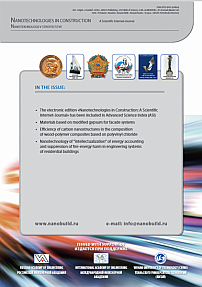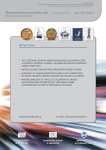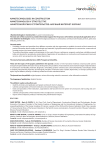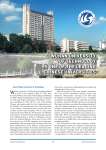Nanotechnologies in Construction: A Scientific Internet-Journal
Nanotechnologies in Construction: A Scientific Internet-Journal included in: Scopus, Web of Science (WOS), RSCI, VAK RF, ESCI, CrossRef, DOAJ, EBSCO. The Journal has been published since 2009.
The Electronic Edition «Nanotechnologies in Construction: A Scientific Internet-Journal» is registered as an independent mass media in the Ministry of Communication and Mass Media of The Russian Federation. (Registration Certificate Эл № ФС77 – 35813 of 31 March 2009 issued by the Federal Service on Supervision in the Sphere of Connection and Mass Communications).
The main aim of the Journal is to provide information support for the process of invention and practical application of science intensive technologies (mostly nanotechnological products) in construction, communal and housing services, joint areas (industry, power et al.).
The main tasks:
– Providing scientists and specialists from different countries with the opportunity to publish the results of their research and receive information about modern technologies and materials, high-performance equipment in construction, communal and housing services, joint areas (industry, power et al.).
– To provide information support and participate in the events (forums, conferences, symposia, workshops, exhibitions,round tables etc) devoted to nanoindustry and problems of application of nanoindustry in construction and housing and communal services, which are perspective and of great importance.
Center for New Technologies «Nanostroitelʹstvo»
Выпуски журнала
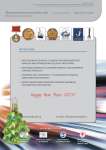
6 Vol.15, 2023 Nanotechnologies in Construction: A Scientific Internet-Journal
Выпуск журнала
Бесплатно
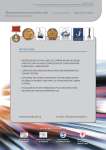
5 Vol.15, 2023 Nanotechnologies in Construction: A Scientific Internet-Journal
Выпуск журнала
Бесплатно
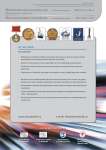
4 Vol.15, 2023 Nanotechnologies in Construction: A Scientific Internet-Journal
Выпуск журнала
Бесплатно
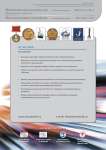
3 Vol.15, 2023 Nanotechnologies in Construction: A Scientific Internet-Journal
Выпуск журнала
Бесплатно
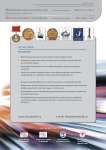
2 Vol.15, 2023 Nanotechnologies in Construction: A Scientific Internet-Journal
Выпуск журнала
Бесплатно
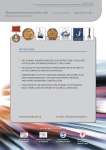
1 Vol.15, 2023 Nanotechnologies in Construction: A Scientific Internet-Journal
Выпуск журнала
Бесплатно
Статьи журнала
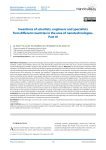
Статья научная
Introduction. Advanced technologies impress people’s imagination demonstrating the latest achievements (materials, methods, systems, technologies, devices etc.) that dramatically change the world. This, first of all, concerns nanotechnological inventions designed by scientists, engineers and specialists from different countries. Main part. The article provides an abstract review of patents. The results of creative activity of scientists, engineers and specialists, including inventions in the field of nanotechnology and nanomaterials, being implemented, allow achieving a significant effect in construction, housing and community services, and related sectors of the economy. For example, the invention «Composite material with oriented carbon nanotubes» refers to the area of composite materials which consist of polymer matrix and filler that is often presented by carbon nanotubes. The technical result is increased tensile strength of composite material due to formation of structure of oriented carbon nanotubes in polymer matrix. That is performed by means of flat-rate flow of direct current which destroys filler agglomerates. The specialists can also be interested in the following inventions in the area of nanotechnologies: a method to produce powder containing nanocrystalline cubic tungsten carbide; a method to produce porous graphene membranes and the membranes produced with this method; suppressor coating on the basis of polymer matrix with inclusion of carbon nanotubes and a method to produce it; a method to determine location of polyethylene gas pipeline and places of possible illegal tapping of those pipeline; a method to produce biphasic thermoelectric ceramics; electron-beam system of 3D radiant nanomodification for materials and articles; lab-on-fruit skin and lab-on-leaf towards recognition of trifluralin using Ag-citrate/GQDs nanocomposite stabilized on the flexible substrate: A new platform for the electroanalysis of herbicides using direct writing of nano-inks and pen-on paper technology; and others. Conclusion. One of the most challenging tasks the economy of every country face is to increase industrial competitiveness through technological upgrade. From the side of the state and companies the principal object to control in this process are the people and enterprises dealing with introduction of inventions and new technologies.
Бесплатно
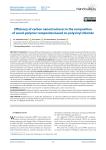
Статья
Introduction. The most effective binding agents in wood-polymer composites based on polyvinyl chloride are carboncontaining nanostructures, which improve the electrical, physical-mechanical, rheological properties, as well as the structure and durability of the composites. Their main disadvantage is a high degree of particle aggregation, which makes it difficult to mix and process them in polymer compositions. In this regard, an urgent task is to search for such carbon nanomodifiers that would have a low degree of aggregation and low cost. Methods and materials. The paper studies the effectiveness of mechanically activated petroleum cokes as binding agents in building wood-polymer composites based on polyvinyl chloride. Mechanical activation leads to the functionalization of carbon particles of coke with the formation of oxygen-containing groups on the surface. The effect of various amounts of coke (up to 10% of the mass of wood flour) is considered and the relationship between the nature of coke and their concentration in the polymer compositions with the main technological (melt flow) and operational (tensile and bending strength, high elasticity modulus, hardness, water absorption and thermal stability) indicators and supramolecular structure of woodpolymer composites has been identified. Results and discussion. With the introduction of cokes, a high degree of orientation of the supramolecular structures of the composites in the direction of extrusion of the samples is observed, which leads to an increase in the breaking strength and bending strength, as well as the high elasticity modulus. The optimal concentration of additives was determined from 0.1 to 5%. In relation to wood flour, the amount of which in the wood-polymer composition is 50 mass parts per 100 mass parts PVC. Conclusion. The introduction of mechanically activated petroleum cokes as binding agents in wood-polymer composites based on polyvinyl chloride has been carried out. Mechanical activation made it possible to reduce the aggregation of coke particles into larger agglomerates, which makes it possible to efficiently introduce the nanomodifier in dry form and to exclude the introduction of nanomodifier in the form of aqueous dispersions, which is a rather energy-intensive production operation.
Бесплатно
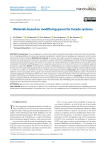
Materials based on modified gypsum for facade systems
Статья научная
Introduction. The use of gypsum in construction systems exposed to atmospheric influences involves the introduction of modifying additives of various types: polymer compositions, mineral fine and nanodisperse components, which can also be products of other industries. Methods and materials. To increase the weather resistance of gypsum stone, its strength characteristics and water resistance, the research considered a complex method of modifying gypsum binder by introducing aqueous solutions of polycondensation resins that harden in the material and nanocomponents. The experiment to assess the effect of the composition of complexly modified gypsum on its properties was carried out on the basis of the matrix of a complete quadratic three-factor experiment. Results. The strength of a complex modified gypsum stone during compression and bending increases by 30% and 25%, respectively, during 80 days of storage in the air. The compressive strength is 60 MPa, and the bending strength is 12 MPa. The samples can withstand 150 cycles of alternating freezing and thawing. Discussion. The introduction of polymer additives into the composition of the gypsum mixture leads to the fact that the gypsum during hydration creates a framework of crystalline aggregates of dehydrate, and the resin, when cured, forms a continuous polymer matrix. The polymer gypsum has the property of increasing the strength over time due to the ongoing polymerization of the resin. Conclusion. A weather-resistant gypsum-containing material was obtained. The use of man-made waste makes it possible to solve the problem of their disposal, which determines the reduction of the negative load on the environment. The methodology for assessing the weather resistance of gypsum stone, and, first, frost resistance, was tested.
Бесплатно

